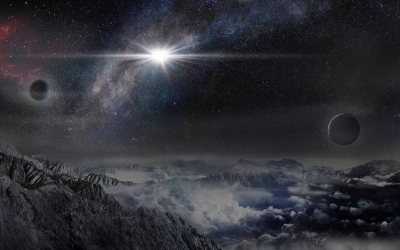
A white yellow star in the Sextans constellation (HD 86081) is now known as Bibha, (‘bright beam of light’ in Bengali) in honour of Indian woman scientist Bibha Choudhury, who discovered subatomic particle, pi-meson. Its accompanying exoplanet, HD86081b, is named Santamasa (‘clouded’ in Sanskrit). Bibha is as hot as the sun with a surface temperature of about 6,000 degrees Kelvin. It is 1.55 times bigger, 1.21 times massive and 1.75 times brighter. It is so far away that light from it takes 310.93 years to reach Earth. While the Sun is 5 billion years old, Bibhä is an ageing star at 6.210 billion years. Santamasa, its only planet, orbits around it in just 2.1375 days. The International Astronomical Union (IAU) unveiled the names at the end of the global contest NameExoWorlds, organized as part of its centenary celebrations. Countries around the world allocated names to various planets and stars outside the Solar System. While Santamasa and Bibha were named by India, one other star also got an Indian name – WASP-72 was named Diya by Mauritius.
Ananyo Bhattacharya, a 22-year-old student of Sardar Vallabhbhai National Institute of Technology at Surat, had suggested the name of ‘Bhibha’ for the star and 13-year-old Vidyasagar Daud of Singhad Spring Dale Public School, Pune, had suggested ‘Santamasa’ for the planet.
Some of the other names approved by the IAU for other stars and planets from other countries include the names of mythological dogs, Bran, Tuiren, from the Irish legend for a host star and its exoplanet located in the constellation of Canes Venatici (the Hunting Dogs), Wadirum and Petra, names of ancient cities of Jordon for a star and its exoplanet in the constellation of Aquila, Baiduri and Intan, names of gemstones in Malay language for a pair in the constellation of Fornax (the Furnace) and Nakambé and Mouhoun, the two prominent rivers of Burkina Faso for a star and exoplanet in constellation of Eridanus (The River).
Once a star and few of its characteristics are found, they are listed in a catalogue such as Henry Draper Catalogue (HD) and assigned telephone-number-like designations. “There has been growing interest amongst astronomers and the public alike to also assigning proper names, as is done for Solar System bodies,” says Eric Mamajek, co-chair of the NameExoWorlds Steering Committee of IAU.
Announcing the names at a press conference at Paris, Project Manager, Eduardo Monfardini Penteado, said: “The IAU 100 NameExoWorlds campaign provided the public with the exciting opportunity to help with the naming of over 100 new worlds and their stars.”
Credit : The Hindu
Picture Credit : Google




